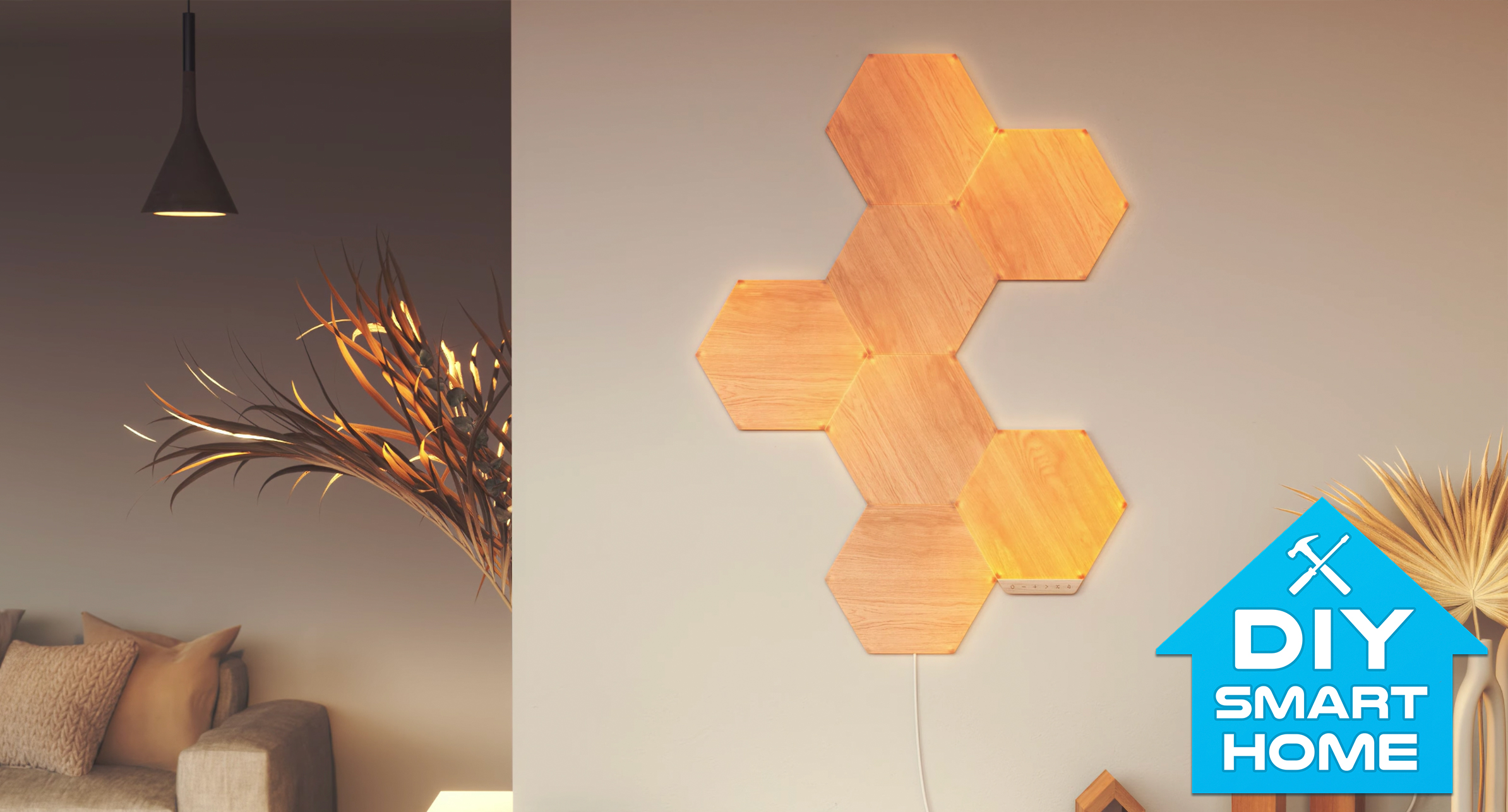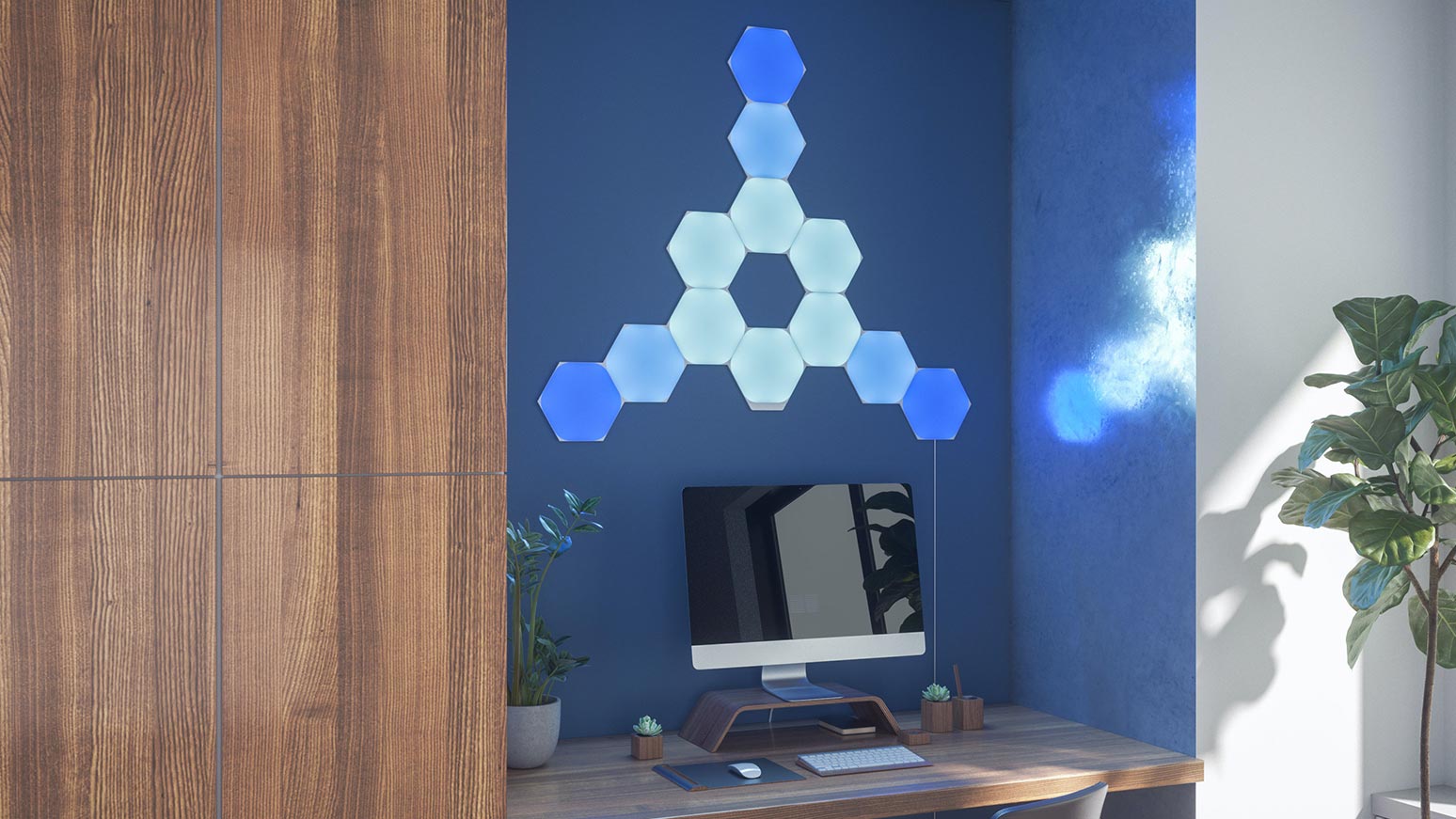These amazing smart light panels just upgraded my smart home
Nanoleaf Elements are the sophisticated smart lights I've been waiting for

This story is part of an ongoing DIY smart home series. Be sure to check out the latest installments to follow the renovation process from start to finish.
Anyone who knows me knows I love decorative smart lights: Light strips, lamps, wall panels, battery-powered fixtures — if it lights up and looks like it belongs in a nightclub, it has a place in my heart. But for my DIY smart home, such products seemed frivolous, and perhaps a little tacky.
That’s not to say all ornamental, color-changing lights are gaudy. I have plenty adorning my bedroom and entertainment area. In fact, the Nanoleaf Shapes I tested last year helped me get through the mundane routines of working from home. It made sitting at a small desk all day a little less miserable, and a whole lot funkier.
- DIY smart home: Why I bought a wine fridge — and you should, too
- This Alexa smart faucet is the coolest smart home device I’ve ever used
But when Nanoleaf sent me its latest release, a sophisticated product called Elements, I realized light-up wall panels might have a place in my renovated kitchen and living area after all. Yes, even though I went with smart switches instead of smart lights for illuminating the space.
More grown-up than gamer, Elements takes cue from nature with a textured wood finish on each hexagonal panel. Like Nanoleaf’s other products, the Elements panels connect together in a geometric design of your choosing, and colors aren't a vortex of rainbow.
Instead, the Elements panels provide adjustable warm and cool whites (1500-4000K). The result is soothing, calming and every other adjective you’d use to describe a spa.
Elements don’t ditch all the tricks of Nanoleaf’s RGB counterparts. When you play music, which I do through an Amazon Echo (4th Gen), these panels dance along to the melody. I can ask my voice assistant (here’s why I use Alexa rather than Google Assistant) to adjust the brightness or change scenes, too.
While my kitchen’s new overhead floodlights are easily adjusted with my Brilliant smart home controller, those traditional lights don’t exactly inspire. And they’re certainly boring compared to the light shows I’ve set up before. Elements propose a happy medium: I still get to show off app-controlled , and my parent’s living area doesn’t look like a dorm room.
Get instant access to breaking news, the hottest reviews, great deals and helpful tips.

I wish my smart home controller extended compatibility to Nanoleaf, so I could toggle Element’s settings by my front door alongside controls for my Schlage smart lock and my Honeywell Home Wi-Fi 7-day smart thermostat. Luckily, the light panels have a physical controller of their own, so my family members or guests don’t need an app to kick up the brightness, switch scenes or turn the lights off.
And when turned off, the Nanoleaf Elements act as decorative wood panels. Conveniently, the maple-like color matches our recently-stained floors. I don’t think they’re quite as organic-looking as Nanoleaf was going for (the hexagon shape is still pretty modern,) but the geometric shapes are plenty classier than the white, plastic exterior of the company’s other offerings.
There’s a catch to Elements, though, and it’s not one I’ll take for granted. The starter kit, which includes seven hexagons, costs $299.99. An expansion pack with three more panels costs $99.99. Nanoleaf sent me both to test, and while I feel like the inclusion has upgraded the zen in my space, I don’t think I’d buy them over a pack of yoga classes or a summer beach pass.
If you’re following my guide to saving thousands on a smart home with the DIY route, Nanoleaf Elements probably shouldn’t be on your short list of necessities. Devices like smart locks, smart thermostats or even an indoor security camera can actually help you monitor your space (and help you save money, in some cases.)
But if you’ve already outfitted your home with all the essential smart home devices, or are looking to add some outdoors-inspired yet tech-savvy decor to your home, Nanoleaf Elements might be one of the best smart lights you’ve been waiting for.
Be sure to check out my guides to the best smart home devices (and best cheap smart home devices) for more gadget recommendations. And do bear in mind to watch out for 5 common smart home problems.
Return next week for another DIY smart home installment. Until then, email me at kate.kozuch@futurenet.com or leave a comment below with anything you’d like to see me cover in the connected space.

Kate Kozuch is the managing editor of social and video at Tom’s Guide. She writes about smartwatches, TVs, audio devices, and some cooking appliances, too. Kate appears on Fox News to talk tech trends and runs the Tom's Guide TikTok account, which you should be following if you don't already. When she’s not filming tech videos, you can find her taking up a new sport, mastering the NYT Crossword or channeling her inner celebrity chef.
